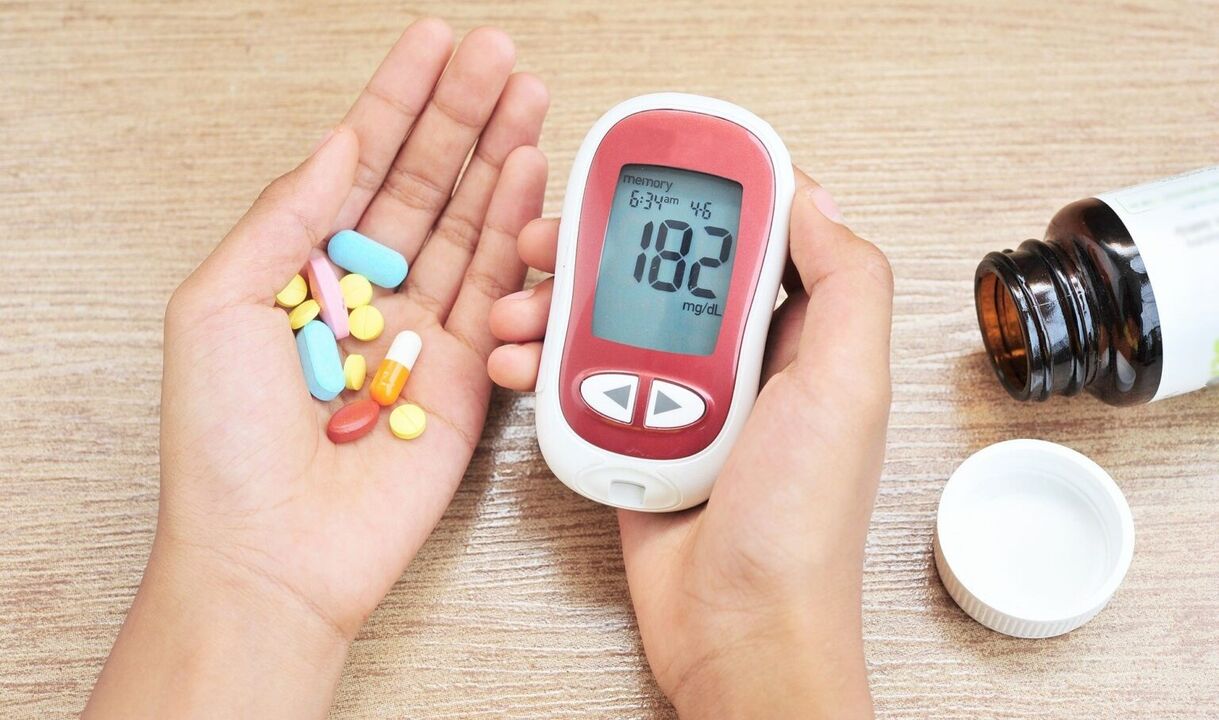Diabetes mellitus is a metabolic disorder characterized by an increase in blood sugar.

The disease occurs as a result of defects in the production of insulin, a defect in the action of insulin or both of these factors. In addition to increasing blood sugar levels, the disease is manifested by the release of sugar in the urine, abundant urination, increased thirst, fat disorders, proteins and mineral metabolism and the development of complications.
The types
rigor
Symptoms of diabetes
The main symptoms of the disease include manifestations such as:
Type 1 diabetes usually begins at a young age.
Type 2 diabetes is usually diagnosed in people over 35-40 years.
Diagnosis of diabetes
The diagnosis of the disease is based on blood and urine tests.
To make a diagnosis, the concentration of blood glucose is determined (an important circumstance is a repeated determination of an increased level of sugar and other days).
The results of the analysis are normal (in the absence of diabetes)
On an empty stomach or 2 hours after the test:
The analysis results in the presence of diabetes mellitus
On an empty stomach:
At any time of the day, regardless of the time of meals:
The level of glycated blood hemoglobin in diabetes exceeds 6. 7-7. 5 %.
The C-Peptid content allows you to evaluate the functional state of beta cells. In patients with type 1 diabetes, this level usually decreases, in patients with type 2 diabetes - normally or adult, in patients with insulinoma - significantly increased.
The concentration of immunoreactive insulin decreases with type 1, normally or increases with type 2.
Determination of blood glucose concentration to diagnose diabetes is not performed against the background of acute disease, damage or surgical intervention, against the background of short-term administration of drugs that increase the concentration of blood glucose (adrenal hormones, thyroid hormones, thiazides, etc. ). liver.
Glucose in the urine in diabetes only occurs after exceeding the "kidney threshold" (approximately 180 mg % 9. 9 mmol/l). Important fluctuations on the doorstep and a tendency to grow with age are characteristic; Therefore, the definition of glucose in the urine is considered an insensitive and unreliable test. The test serves as a gross reference point for the presence or absence of a significant increase in blood sugar (glucose) and in some cases it is used for daily observation of the dynamics of the disease.
Treatment of diabetes
Physical activity and proper food in treatment
In a significant proportion of patients with diabetes mellitus, observing dietary recommendations and achieving a significant decrease in body weight by 5-10 % of beginners, blood sugar indicators improve to the norm. One of the main conditions is the regularity of physical exercise (for example, walking 30 minutes daily, swimming 1 hour 3 times a week). With the concentration of glucose in the bloodshed>13-15 mmol/l, no physical activity is recommended.
With light and moderate physical exercise that lasts no more than 1 hour, additional use of carbohydrates before and after load is required (15 g of easily soluble carbohydrates for every 40 minutes). With a moderate physical exercise that lasts more than 1 hour and intense sport, it is necessary to decrease by 20-50 % of the insulin dose, acting long and in the next 6-12 hours after physical activity.
Diet in the treatment of diabetes (Table no. 9) aims to normalize carbohydrate metabolism and prevent fat metabolism.
Treatment with insulin preparations
Insulin preparations for the treatment of diabetes are divided into 4 categories, with the duration of action:
The ways of appointing insulin are strictly individual and are selected for each patient with a dialitologist or endocrinologist.
Methodology for presenting insulin
When insulin enters the injection site, it is necessary to form a skin sheep so that the needle enters the skin, and not into the muscle tissue. The skin file should be wide, the needle should enter the skin at an angle of 45 ° if the thickness of the skin fold is less than the needle length.
When choosing a place for injection, compacted skin areas should be avoided. Injection sites cannot be changed non -systematic. Do not injections under the shoulder skin.
Heat and physical activity increase the rate of insulin absorption, and cooling reduces it.























